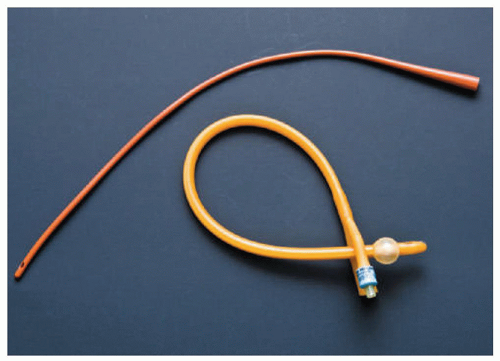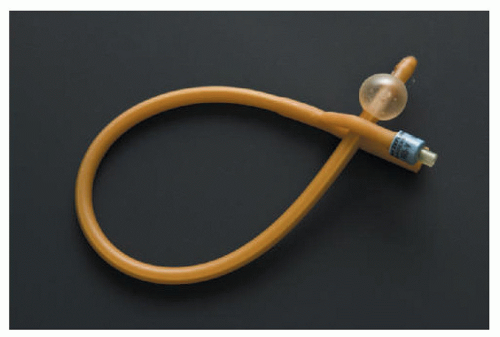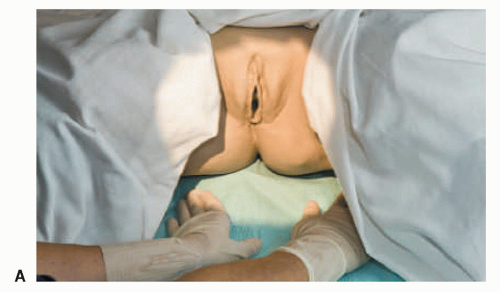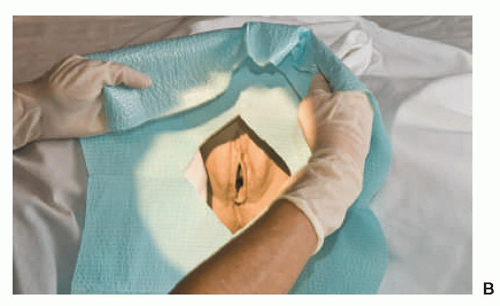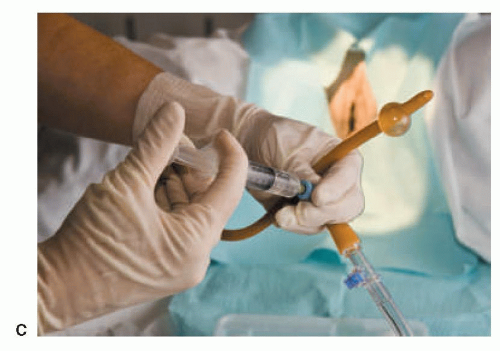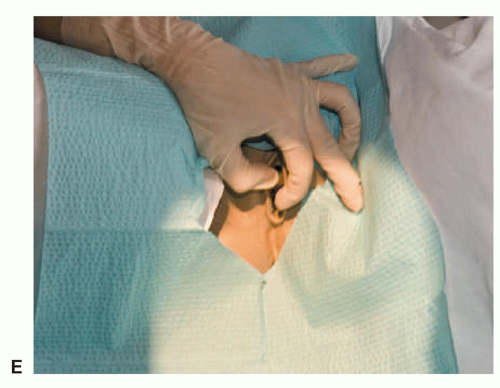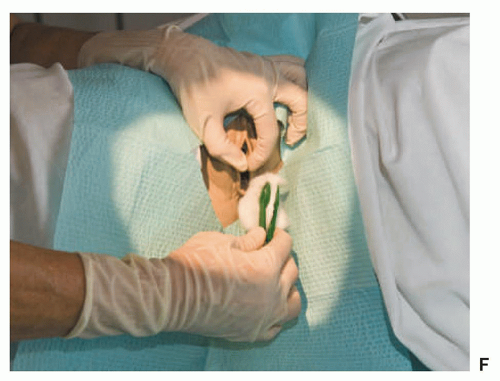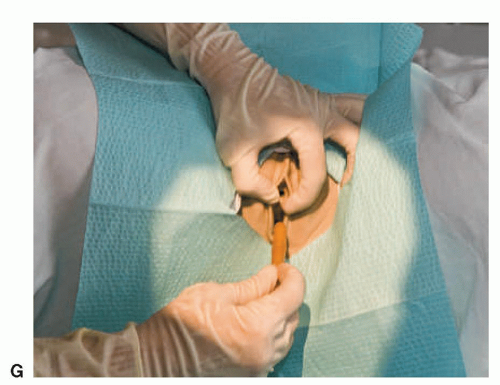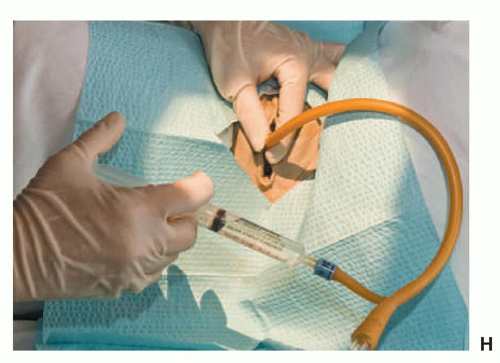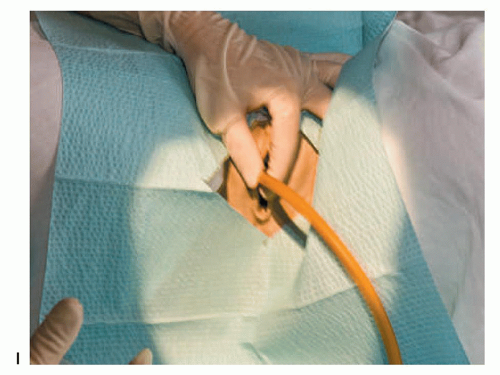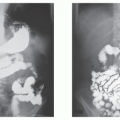Urologic Procedures
OBJECTIVES
After studying this chapter, the student will be able to:
1. Explain the need for infection control when working with patients who have urinary procedures.
2. Describe the correct method of inserting a straight catheter and a retention catheter into the adult urinary bladder.
3. List the steps for the correct method of removing an adult retention catheter from the urinary bladder.
4. Explain the correct method of transporting a patient who has a retention catheter in place.
5. Describe the precautions that must be taken when a patient is undergoing cystography, retrograde pyelography, or placement of a ureteral stent.
6. Describe alternate methods of catheterization of the adult urinary bladder and explain patient care responsibilities when these catheters are in place.
7. Explain how to assist a female patient with a bedpan.
8. Describe a male urinal and the process of assisting a patient to use one.
KEY TERMS
Cystography: Radiographic imaging of the urinary bladder
Cystoscope: An instrument used for examining the urinary bladder and ureters that is equipped with a light, a viewing obturator, and a lumen for passing catheters
Incontinence: The inability to refrain from yielding to the normal impulse to defecate or urinate
Lithotomy position: A posture in which the knees are flexed and the thighs abducted and rotated externally
Penoscrotal junction: The area of the male penis that meets the scrotum
Perineal: Pertaining to the area between the anus and the scrotum in the male and the vulva and the anus in the female
Reflux: Backward flow; usually unnatural, as when urine travels back up the ureter
Retrograde: Moving in the direction that is the opposite of what is normal
Sphincter: A circular band of muscle constricting an orifice, which contracts to close the opening
Ureteral catheter: A firm catheter inserted into the ureter attached to a cystoscope
Void: The action of emptying urine from the bladder
Urinary tract infections (UTIs) are the most common nosocomial infections. A common cause of these infections is poor infection control practices by health care workers during placement of catheters in the urinary bladder or during care for patients who have indwelling catheters in place. Radiographers frequently work with patients who have urinary catheters in place. Although no longer a common practice, radiographers may be responsible for inserting a catheter into the patient’s urinary bladder before radiographic imaging procedures take place.
Catheterization of the urinary bladder refers to the insertion of a plastic, silicone, or rubber tube through the urethral meatus into the urinary bladder. Catheters are inserted into the urinary bladder for a number of reasons: to keep the bladder empty while the surrounding tissues heal after surgical procedures; to drain, irrigate, or instill medication into the bladder; to assist the incontinent patient to control urinary flow; to begin bladder retraining; or to diagnose disease, malformation, or injury of the bladder.
Cystography, retrograde pyelography, and placement of ureteral stents all involve radiographic imaging. These procedures are performed frequently in the special procedures area of the radiographic imaging department or in the cystoscopy laboratory. As part of the health care team, radiographers actively participate in these diagnostic examinations and treatments because fluoroscopy and radiographic images are required while they are in progress.
PREPARATION FOR CATHETERIZATION
The urinary bladder is sterile; therefore, urinary catheterization requires sterile technique. Because the urinary bladder is easily infected, any object or solution that is inserted into it must be free of bacteria and their spores. Infection or injury may result when the technique used in the performance of the catheterization of the urinary bladder is poor or when caring for a patient.
Catheterization is not performed without a specific order from the physician in charge of the patient. It is less stressful for some patients if male technologists catheterize male patients and female technologists catheterize female patients. Although there will probably be a radiology nurse available in the imaging department to perform catheterization, or the patient may come from the floor with a catheter already in place, it is important for the technologist to understand the procedure in the event it becomes necessary to perform it.
When a physician requests catheterization of a patient, it must be established which type of catheter is to be used. Depending on the reason for the radiographic procedure, a straight catheter or an indwelling catheter (usually a Foley) is chosen. A straight catheter is used to obtain a specimen or to empty the bladder and is then removed. An indwelling catheter is inserted and left in place to allow for continuous drainage of urine. Most hospitals provide prepared sterile trays for catheterization with the desired type and size of catheter and the necessary equipment included. A tray set is chosen according to the type of catheter to be inserted. The equipment needed to perform catheterization is listed as follows:
1. Straight or indwelling catheter
2. Antiseptic solution (swabs or solution with cotton balls)
3. Water-soluble lubricant
4. Sterile gloves
5. Sterile drape
6. Sterile forceps if using cotton balls for cleansing meatus
7. Closed drainage system set (indwelling catheter)
8. Receptacle for draining urine (straight catheter)
9. Specimen bottle
The antiseptic solution most frequently used for cleansing the penis or the female perineum before catheterization is a povidone-iodine solution. For cleansing purposes, the patient must be assessed for allergic response to iodine before this solution is used. A drape sheet and an extra means of casting light on the perineal area are also needed. Do not attempt to catheterize a female patient unless adequate lighting is provided. Catheter size and tips vary and are graded according to lumen size, usually on the French scale. The size of the catheter is listed on the prepared catheterization set.
A straight catheter is a single-lumen tube (Fig. 11-1). Indwelling catheters have a double lumen with an inflatable balloon at one end. One lumen is attached to a urinary bag to allow for continuous urinary drainage; the other lumen is a passageway controlled by a valve that serves as a portal for instilling sterile water into the balloon. The balloon holds the catheter in place after it is inserted into the bladder (Fig. 11-2). A third type of catheter, known as the Alcock catheter, may occasionally be seen. This type of catheter has three lumens in which the third lumen provides a passage for irrigation solution and is used for patients in need of continuous bladder irrigation.
PROCEDURE
Female Catheterization
The female urethra is usually 1.5 to 2 inches (3 to 5 cm) in length and smaller in diameter than the male urethra. A smaller catheter than that used for male catheterization is necessary for the female patient. Catheters are sized by the French scale. The smaller the number listed on the catheter package, the smaller the lumen size of the catheter. A 14F (used for an adult female) is smaller in diameter than a 20F (used for an adult male).
When a request for a procedure that requires catheterization is received, the technologist first determines what type (straight or indwelling) of catheter to choose. Next, all equipment is assembled, and the technologist washes her hands. Patients are often embarrassed and apprehensive about this procedure, so a good explanation and reassurance that there will be little, if any, pain is vital to the success of the procedure. This explanation should be completed once the patient has been seated on the radiographic table and before placing the patient in position for the catheterization. Inform the patient that there will be a slight sensation of pressure when the catheter is inserted. Provide privacy for her by using a screen or by closing the door from the radiography room to the work area. Assess the patient’s ability to maintain a position that allows for adequate exposure of the perineum. Assess the perineal area for soiling at this time. If the perineum is soiled, obtain washcloths, soap, warm water, and clean disposable gloves and cleanse the area before beginning the procedure. The following steps for catheterization are no longer as descriptive as the profession has evolved, and this procedure is no longer as commonly needed to be done by a radiographer.
1. Position the patient on her back with her knees flexed and externally rotated. This is called the dorsal recumbent (lithotomy) position.
2. Drape the patient with a sheet so that only the perineum is exposed.
3. Adjust the light so that it shines directly on the perineal area (Fig. 11-3A).
4. Open the sterile pack in a convenient location that will not allow contamination of the sterile field. The outer packaging of the pack may be used as a waste receptacle. Place it in a convenient spot away from the sterile.
5. Put on sterile gloves. The gloves are usually the uppermost item in the sterile pack and are cuffed for putting on by means of the open-gloving technique for sterile gloving.
6. Pick up the first sterile drape. With both hands covered with this drape, place it slightly under the patient’s hips extending it to the front of the buttocks to cover the table.
7. Place the fenestrated second drape, to allow for only perineal exposure (Fig. 11-3B).
8. If the catheterization to be done is an indwelling type, attach the syringe containing sterile water and test the balloon. Withdraw the water, but leave the syringe connected (Fig. 11-3C). Replace the catheter to the inside of the container to keep it sterile.
9. Open the container of sterile, water-soluble lubricant, and lubricate the catheter tip about 0.5 inch (1.2 cm) (Fig. 11-3D).
10. Open the iodophor solution at this time and reserve it for later use.
11. Inform the patient that she is about to have her perineum cleansed with a solution that is slightly cold and wet.
12. With the nondominant hand, separate the labia minora until the urethral meatus is clearly visible (Fig. 11-3E). This glove is now contaminated and will be maintained in this position to allow exposure of the area until the procedure is complete.
13. Cleanse the distal side of the meatus with a single downward stroke of the iodophor solution (Fig. 11-3F). Dispose of the swab being careful not to crossover the sterile field with the contaminated article.
14. Next, wipe down the proximal side of the labia and meatus. Discard this appropriately. Lastly, using the third saturated ball (swab), wipe down the center directly over the meatus. Discard this without crossing the sterile field. Excess solution should be wiped off with an extra cotton swab.
15. Inform the patient that the catheter is about to be inserted, and ask her to take a deep breath while the catheter is being inserted.
16. Keep the contaminated, nondominant hand in place, while the sterile, dominant hand, picks up the lubricated catheter and inserts it into the urethra (Fig. 11-3G). When urine begins to flow from the catheter, the catheter has passed through the sphincter and into the bladder. When this occurs, insert the catheter about 1 inch more and then remove the hand holding the perineum down to the catheter to hold it in place until the bladder is emptied.
17. If a straight catheter is being used, place the drainage basin so that it will catch the urine. Follow your institution’s policy for collecting a urine specimen, if needed. If an indwelling catheter is being used, a drainage tube may be attached at the distal end of the catheter. The urine will flow into the tubing and then into the drainage bag that is attached.
18. Inject the water back into the balloon of the catheter (Fig. 11-3H). Pinch the valve portal with the nondominant hand while removing the syringe from the valve. Most indwelling catheters valves are self-sealing, so when the syringe is removed, the procedure is complete.
19. Gently tug on the indwelling catheter to be certain that it will be retained (Fig. 11-3I). Remove the soiled equipment and gloves. Allow the patient to return to a comfortable position. The technologist should now wash her hands.
20. If the catheter is to remain in place for some time, tape it to the patient’s inner thigh to prevent it from becoming dislodged. Make certain that there is no tension placed on the catheter as it is taped. Arrangement for urinary drainage must be made, depending on the procedure that is to follow.
PROCEDURE
Male Catheterization
The equipment needed for catheterizing male patients is similar to that used for female patients; however, because the male urethra is considerably longer than the female’s, a slightly larger catheter is usually required. The male urethra is 5.5 to 7 inches (14 to 18 cm) in length; therefore, a 16F to 20F catheter is required. The patient is placed in a supine position with his legs slightly abducted. His torso and legs are covered to the pubis so that exposure is minimal. Make certain that the patient’s pubic area is clean. If he is not circumcised, put on clean, disposable gloves, withdraw the foreskin of the penis, and clean the urethral meatus. Remove the gloves on completion and complete a 30-second hand wash. To begin, have good lighting available.
1. Open the sterile pack on a Mayo stand beside the patient or between the patient’s thighs if he can be depended on not to contaminate the sterile field.
2. Prepare the pack as in Steps 4 through 10 for female catheterization. Place the first sterile drape over the thigh up to the scrotum and the fenestrated drape over the pubic area, leaving the penis exposed.
3. Pick up the catheter and lubricate it heavily from the tip down about 7 inches because more lubricant is required to facilitate passage of the catheter for males than for females.
Stay updated, free articles. Join our Telegram channel

Full access? Get Clinical Tree



